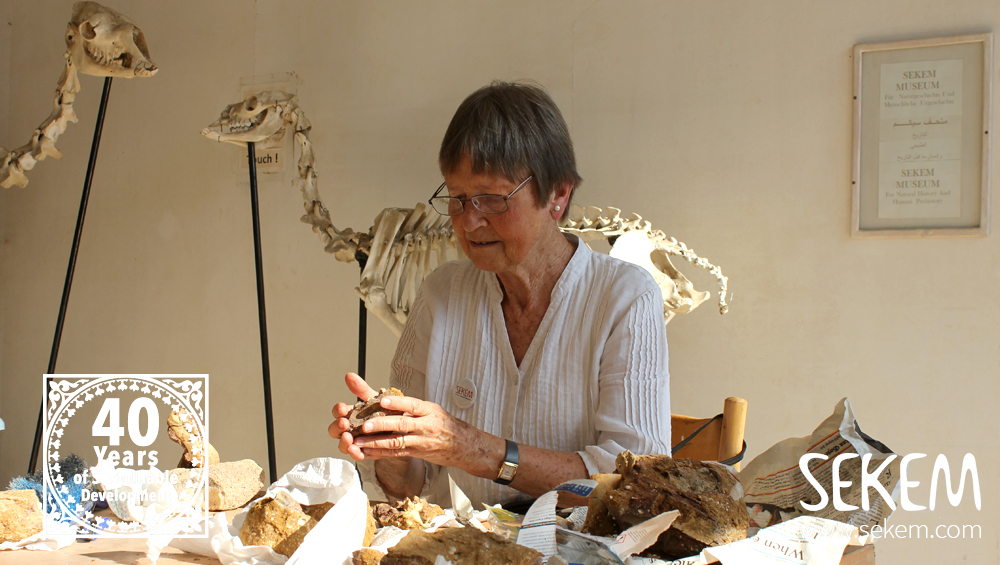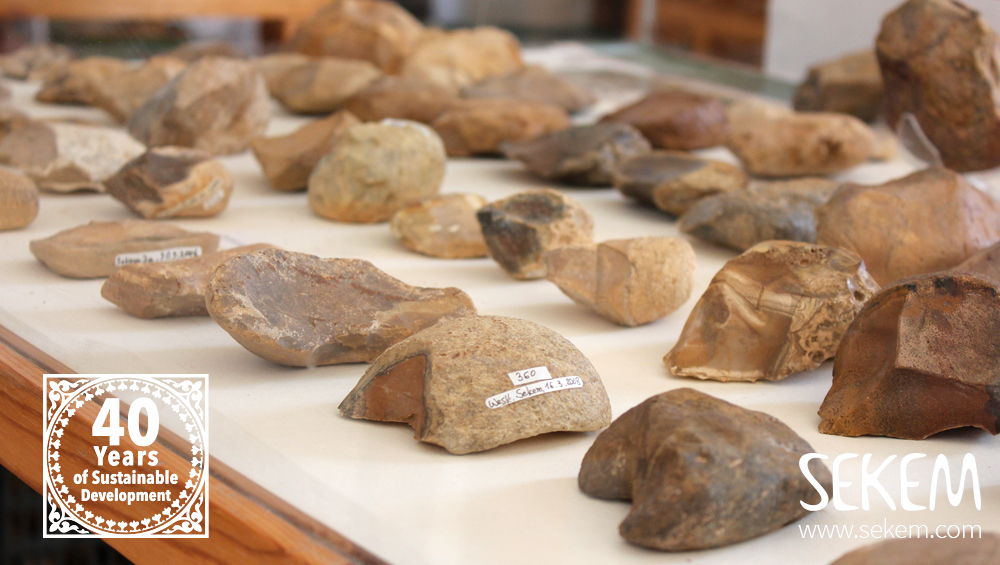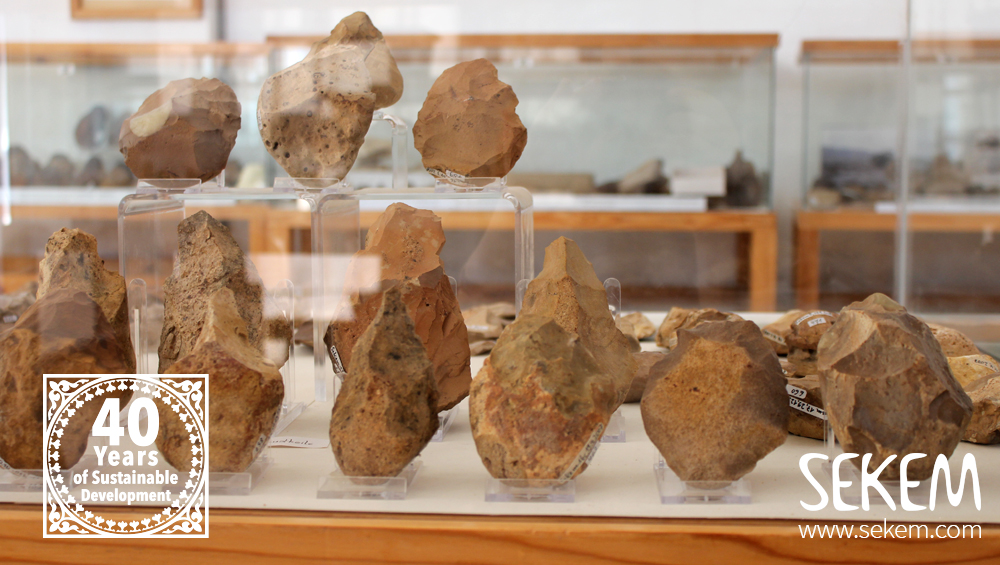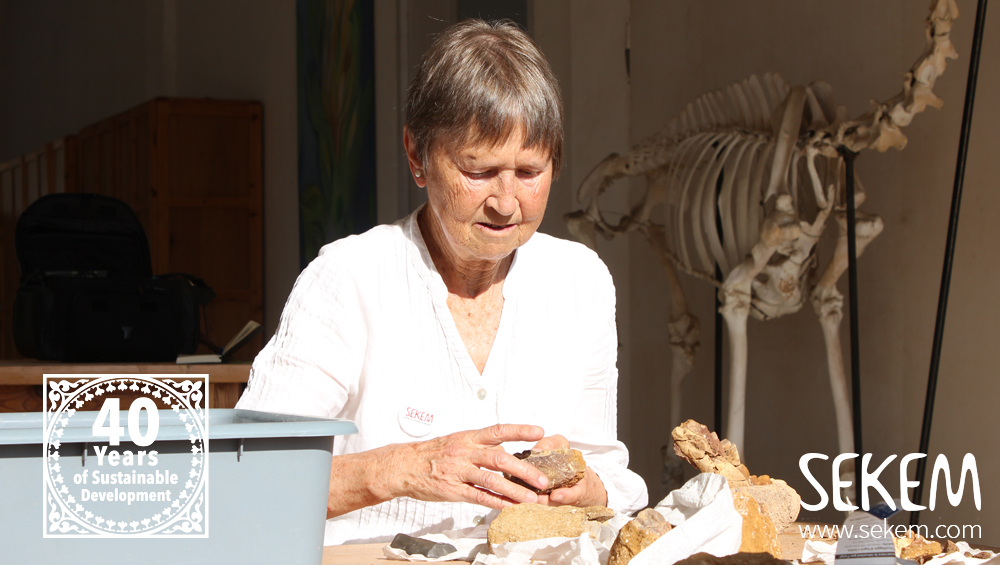In the past year, SEKEM initiative celebrated its 40th anniversary. On the former desert land, where today SEKEM Community currently operates, learning and working, there had once human life millions of years ago. This is testified by findings of Dr. Wolfgang Schad that he first discovered in 2004. The German evolutionary biologist found stones studded by prehistoric men on the SEKEM fields. It goes without saying that Dr. Ibrahim Abouleish immediately asked his friend to further pursue the discoveries and provided a place where the prehistoric objects could be displayed. This is how the SEKEM Museum of Natural History and Human Prehistory was founded.

Since then, Dr. Wolfgang Schad has taken regular excursions in and around SEKEM Farm. Together with many helpers, he collected more than 1000 other stone artifacts from the SEKEM fields and from nearby desert areas. One reason for the existence of these historic objects comes from the scientific assumption that around two million years ago people of the Paleolithic Age left Africa to travel to the Middle East. Their roads were most likely between the Nile Delta and the Red Sea. This is how people crossed the area where today SEKEM Farm is located. The findings are therefore of great importance for exploring human prehistory.

The SEKEM Museum now has 20 showcases – all made by students of SEKEMs Vocational Training Center – filled with countless stones, arrowheads, bowls and even reptiles. The man-made artifacts of the SEKEM fields can be assigned to different cultural stages of the Paleolithic Age. The further research of the archaeological findings, but also the sorting and maintenance of the museum require a lot of time and expert knowledge. Hence, Dr. Wolfgang Schad is supported by dedicated friends. Recently, the two Waldorf teachers, Angelika Fried and Benjamin Bembé, spent several days in SEKEM studying and documenting many new artifacts. “The findings have to be weighed and measured, photographed and documented,” tells the long-standing SEKEM friend Angelika Fried. “Special pieces with museum value are then included in the exhibition.”

Recently, two prehistorians from the University of Basel visited the SEKEM Museum: Prof. Dr. med. Jean-Marie Le Tensorer and Dr. Reto Jagher. They took over the re-sighting, description and digital capture of the significant discoveries to come to a scientific understanding. The two scientists have a prehistoric research focus, including studies on the first people who left Africa. They are now working on a publication for a relevant journal on the SEKEM hiking trail of prehistoric men.
Christine Arlt
SEKEM Friends Germany
A Lighthouse in the Community: House of Cultures and Abouleish Museum
Creating Out Of Nothingness: SEKEM Day 2016 in Stuttgart

